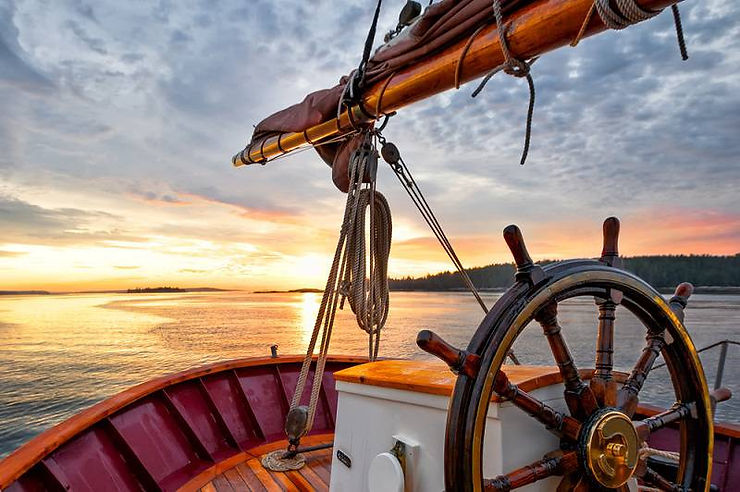We were almost lost in the middle of the Pacific. We almost capsized in those doldrums. Robert Anderson
picture from red bull adventure stories
Ships sailed the oceans long before they were equipped with hydraulic motors. They leave the safety of the harbor with sloping mast and roaring blast. Sails set high to catch the trade winds. No fancy GPS. Just paper maps, compasses and the oceans ahead.
A ship in port is safe. That’s not what ships are built for. If you’ve got a good idea, and you know it’s going to work, go ahead and do it.” Grace M. Hopper
Each sailor must make a decision, to catch the trade winds or to stay in port? But for every ship that departs the port entrusting its fate in trade winds, the doldrums in the ITCZ (intertropical convergent zone) are a nightmare to face.
The ‘Doldrums’ are a broad belt of shallow pressure and weak pressure gradients, towards which the trade wind air streams of the Northern and Southern hemispheres flow. Dreaded by sailors and merchant alike, the doldrums trap ships and sailors for weeks in its dead air. They drift on the sea for days with no progressive movement. Till they hallucinate from hunger and thirst. They Curse the day they left the safety of the harbor, the very day they choose courage over fear.

Like ships sailing the oceans, our destination warrants we go through the doldrums. Our own doldrums are those season of fruitlessness and barrenness. A period of inactivity, stagnancy and little movement or even depression. Times when no matter what we do or don’t do, we do not feel those trade winds that powered us out of the harbor in the first place. In its place, a heavy cloud of stagnation brewing over us. And we know at any time its hail and squall could make landfall. At times we ignore these periods and pretend nothing is wrong, but reality soon catches up. Sometimes we try hard to get out of stagnation, but we find ourselves sinking deeper into it. Let me share with you how the sailing ships survive the doldrums and what we can learn from them.
Be calm, be still, and know that I am God.
When the winds are calm, be calm! When you are stuck in a mire, the last thing you should do is wriggle. The more you struggle, the deeper you sink. The same applies in the doldrums. Sailors know this. They do little or nothing to move the ship past the doldrums. The paradox is if you want out of the doldrums, then you quit trying hard to get out. Quit worrying and save your energy for when the winds return.

You must learn to accept periods of stagnation as part of the seasons in life.
Why do we hit the doldrums only after periods of sustained productivity, growth or loss? It is the same reason why sailing ships, having traveled under sustained north or south trade winds, are forced to rest in the doldrums along equator belt. It is to be calm, to be still and to know that God is God. To rest in the creator of all seasons and zones.
Shift your focus

Are you ever caught in the January doldrums before? After all the excitements and fun in December, you find yourself in the low energy terrain? Life comes to a standstill. Well, it isn’t only you.
After intense booming and leafing in the summer and spring, trees finally hit the winter doldrums. But they don’t panic or get anxious that they will never produce leaves again. They shift their focus to growing roots, resting and preparing for the coming spring. They know spring will come and it always does. God keeps His promises.
When the eagle can’t feel the winds under its wings anymore, it shifts focus to its person. 12 months on the mountain, it seeks new inspiration or simply fresh air.
In periods of stagnation, shift your focus. Take a deep breath and catch some fresh air. Take a break from those same goals that drained you. Refocus on the small gains that make absolute meaning to you. Spend time with your family and friends, take the break you are long due for.
Wait, wait and wait!
Trust me this one is no melody to the sailor’s ear. But waiting is all they do when becalmed. Hours in silence staring at nothing but skies with no silver linings and an inky black sea. That is the exact recipe for depression. While waiting, worrying and complaining can be quite trendy, sailors choose to get occupied. They get occupied with activities that get the ship ready for when the wind hits the sail. They check their course, mend the sail and watch for the winds.







